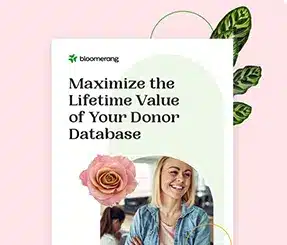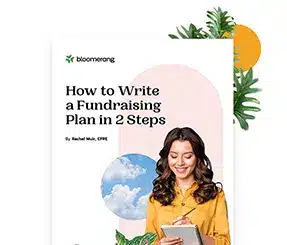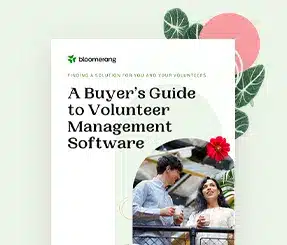Activate DAF Dollars: A Strategic Opportunity For Nonprofits


Full Platform Overview Chat With Us



Full Platform Overview Chat With Us




Every gift begins with a spark—a donor’s desire to make a difference. Across the country, Donor Advised Funds (DAFs) are filled with those sparks, waiting to be turned into action. These are not just numbers on a statement—they are untapped missions, unspoken hopes, and the fuel for change. For nonprofits, the opportunity is clear: by reaching out and inviting DAF donors to invest in your vision, you’re not just asking for support—you’re offering people a chance to bring their purpose to life.
Now is the time to activate those dollars and turn passive potential into powerful impact.
This article breaks down why DAFs represent one of the most underutilized opportunities in fundraising today, and how your organization can start activating DAF dollars with confidence and purpose.
A DAF is a flexible, tax-smart giving vehicle that empowers donors to set aside charitable assets now, and thoughtfully direct those resources over time. Here’s how it works: A donor contributes to a fund administered by a sponsoring organization—typically a public charity, community foundation, or nonprofit 501 (c) (3) financial institution. That contribution can take the form of cash, appreciated stock or other assets, or even cryptocurrency, and it provides the donor with an immediate tax deduction. The assets in the fund are then invested for tax-free growth, while the donor recommends grants to nonprofits they care about—often over months or years. It’s a seamless process with minimal paperwork, designed to make generosity easier and more intentional.
At their core, these funds are built on the very values nonprofits champion: autonomy, intentionality, generosity, and long-term impact. They allow individuals and families to turn financial capacity into lasting impact—on their own timeline, and in alignment with their deepest values. That’s why they matter. For every organization driven by purpose, DAFs represent a powerful alignment—donors with resources and readiness, and nonprofits with vision and need.
The question isn’t whether DAFs matter. They do. The question is whether your nonprofit is ready to help donors turn that potential into real-world change.
On a practical level, they allow individuals to set aside charitable dollars, grow them over time, and recommend grants to causes they believe in. They’re a repository of staggering promise. Yet too often, that potential promise sits idle—not out of disinterest, but from a lack of direct invitation by people, like you, with meaningful opportunities to offer.
As of the end of 2023, Donor Advised Funds held over $251 billion in charitable assets. In that same year, $54.77 billion was distributed to nonprofits—meaning a vast reservoir of potential impact is still waiting to be activated. [See Philanthropy Network via Nonprofit Trust.]
If you remain passive, not proactive, that multi-billion DAF opportunity will remain lost.
They’re reshaping the philanthropic landscape. Over the past decade, DAFs have grown at a pace unmatched by any other charitable vehicle. Contributions to DAFs now represent roughly 10% of all individual giving in the U.S., and the number of DAF accounts has skyrocketed, especially among younger and tech-savvy donors. This is not a blip—it’s a movement.
Part of this growth was accelerated by the 2017 Tax Cuts and Jobs Act, which significantly increased the standard deduction. As a result, many donors—particularly those in the middle to upper income brackets—began “bunching” several years’ worth of charitable contributions into a single year using DAFs, allowing them to exceed the deduction threshold and maintain the tax benefits of giving. DAFs became the perfect tool for this strategy: donors could receive an immediate tax benefit in the year they gave to the fund, while retaining the flexibility to distribute grants over time.
The shift wasn’t only financial—it was also philosophical. There’s a broader cultural change underway. Today’s donors aren’t just giving out of habit or obligation. They want their philanthropy to reflect their values, drive systemic change, and create visible impact. They are planners, not impulse givers. Strategic. Intentional. Outcome-focused.
DAFs align with this mindset—allowing donors to take the time to give wisely, while still moving funds intentionally and permanently into charitable space.
Your mission can be the bridge between donor intent and the yearned-for real-world impact DAF donors seek. They’ve already decided they want to do something philanthropic; they’re just not quite sure how to meaningfully activate their philanthropy. You can show them exactly where their generosity can take root and flourish. Many of these donors already believe in your cause—they’re just supporting you now through other means.
To inspire them to open up their DAF to you requires a clear invitation: We welcome DAF gifts as a powerful way to advance this work. This isn’t about pressure. It’s about purpose. Nonprofits that understand the dynamics behind DAF growth—and respond with clarity, warmth, and strategic communication—position themselves to thrive in the new era of giving.
Donors are ready to give—you just need to open the door. Starting the conversation about Donor Advised Funds doesn’t have to be complex or uncomfortable. In fact, it may be one of the simplest ways to unlock generosity that’s simply waiting to be activated.
One of the most common—and costly—mistakes nonprofits make with Donor Advised Funds is simply not talking about them. Out of uncertainty, discomfort, or a fear of seeming too forward, many organizations avoid mentioning DAFs altogether. But silence sends a message too. It unintentionally signals that your organization doesn’t understand or welcome DAF giving.
As a result, you may be leaving transformational gifts on the table. DAF donors are often among your most thoughtful and committed supporters. They’ve chosen a tool that helps them be more intentional with their giving. And they’re looking for causes that speak to their values, demonstrate impact, and make it easy to give. Your nonprofit can be that cause—but only if you start the conversation.
“The money in a DAF has already been donated—it’s no longer tied to a donor’s day-to-day cash flow or investment portfolio. In other words, donors don’t have to decide whether to give; they simply have to choose where to direct funds they’ve already earmarked for charity. Reminding donors of this can unlock critical support at a time when flexibility, liquidity and urgent philanthropic needs are top of mind.”
— Alia McKee, Sea Change Strategies
Mentioning DAFs doesn’t have to be awkward or overly technical. Adding a line like, “Support our mission with a grant from your Donor Advised Fund” in appeals and on your website donation landing page shows donors you’re ready. When you name the DAF, you normalize it—and that alone can be enough to spark action.
Train your development staff to comfortably ask questions like, “Do you use a DAF for your giving?” or “Would you like to recommend a grant from your fund?” These questions are respectful, professional, and most importantly—empowering.
Stay Tuned for Part 2!
In the second half of this two-part series, we’ll shift from why to how. You’ll learn concrete steps to make DAF giving easy, relational, and deeply impactful—for your donors and your mission. Ready to go deeper? Let’s turn donor intent into real-world change.
Comments